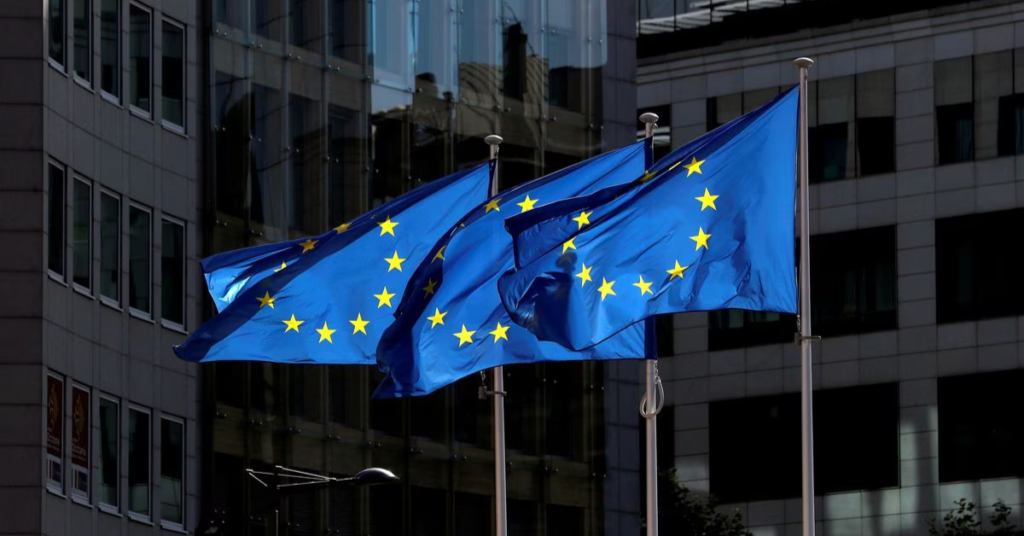It has been predicted that by 2025, the mobile industry will have 5.9 billion unique mobile subscribers or 71% of the expected population of the Earth. In a landscape where competition is already rife, app developers are facing a new threat: the rise of the super app.
IT News Africa’s Jenna Cook had the opportunity to talk to Jessica Knight, Strategic Manager at CURA Software Solutions, about the digital app-ocalypse. Here’s what transpired:
What exactly is a digital app-ocolypse?
The “apocalypse” play on words is in relation to the perception that “apps are taking over” or that you need an app to remain relevant in this era, which is not necessarily always true however a tailored user interface in an app often yields a better user experience (if the app is well designed) than that of a mobile website.
How many apps does the average smartphone user have installed in comparison to the number of apps that they actually use?
This is largely dependent on a person’s motives for downloading the app to begin with. Some people will only download an app if they intend to use it, others may download an app on an impulse or for an instant reward or single-use, only to forget about the app until they perhaps run of storage or come across it by chance on their mobile device or via a push notification.
The install to usage ratio also often differs over time as people have dominant apps that they use on a daily basis and other apps that they use less frequently but enough to keep the app installed.
The average app usage rates don’t really paint a picture of individual users or preferences, but your typical app usage can range anywhere between 10% – 40% of the total number of apps installed on an average user’s device with the most frequently used apps falling in the 10th – 15th percentile and the less frequently used apps in the 16th – 40th percentile. This indicates that upwards of 50% of an average user’s installed apps are essentially useless to them as an app if we look at the frequency as the success factor.
With millions of app offerings across various operating systems, the white elephants of the app world may find and offer more value as a scaled mobile website.
Where do you believe the future of apps is going?
I think the core tenets of what makes a product or service successful will remain largely the same, such as the function it serves, the value it adds, the need or desire it meets. The future of apps is the future determined by people.
People will determine their perception of or minimum requirements for value, people will determine if they perceive an app to serve its function and people will decide if their needs and desires are being met. The tenets for success remain the same but the fluidity of human perception and preference is what will determine the futures of apps.
There are multiple futures ahead and no exact science to determine which ones will be prominent.
Right now, a demand for “super-apps” tells us that people may feel encumbered by the disjointed nature of apps with multiple log-ins, authentications, accounts, payment registrations etc for each app they use/download. A possible future in which a seamless super-app is prominent may see a reversal in preference where people favour the single-app over the super app, only time and user behaviour will tell.
The future of apps is exciting, there is such attention to detail currently on mapping the end-user journey, multiple data points, accelerated algorithmic development, beautiful graphic user interfaces and the power of machine learning – I think this will only get better in the future.
How does user experience and consumer pressure the design and functionality of certain apps?
User experience is key when determining the design and functionality of apps because it affects the adoption rate of the app.
When we talk about the user experience we are once again looking at the user perception and this does not start at the login/ download of the app. Adverts, social pages, websites, app stores, reviews, screenshots/ previews, number of downloads, storage requirements – these all factor into a user’s experience before they have technically even experienced the app.
Once the app has been downloaded there is a whole host more to consider. The permissions you request from users, the time it takes to register and authenticate an account, how seamlessly the app starts with multiple opens and closes. This is just the beginning and only a few of the considerations that will impact usage and adoption before getting to the functionality of the app.
After your app passes all these precursors for the end-user, then you can look at behaviour in the app, usage rates and time spent on the app, feedback from users in the form of questions, functionality requests or bug logging. A difficulty is that not all users have the exact same experience or perception of an app so there is a reliance on patterns of data to adapt and improve apps which is a reactive mechanism.
The rate of sensemaking and actionable information coming out of the data is accelerating thanks in large part to technological advancement in these areas, but this also takes some investment from the developer to implement.
How will the integration of AI and machine learning tailoring technology to improve apps?
I think AI and Machine learning will get us to truly intuitive apps, granted that the AI and algorithms for machine learning are designed and architected well. Poor design or bias in these systems can compound a negative effect on the progress of the app.
Netflix is a good example of how machine learning can be used to tailor the user experience. They have gone through many learning and testing phases in their use of ML to curate suggested content for users and continue to experiment to find the best ways to do this.
A prime example of this is the design of multiple pieces of artwork covers for a single show and based on your behaviour inside the app, the artwork that displays to you is the one that they have algorithmically determined to appeal to you the most with the highest chance of piquing your interest enough for you to watch.
This can be interpreted in many ways though – is this an improvement to the app or is this just a way for “networks” to push certain shows for ratings? The short answer is both: They have their reasons to try and achieve ratings for certain shows however they are also enabling users to experience content that they may enjoy but have previously ignored as the artwork did not appeal to them enough to elicit action.
Netflix have had their challenges in the implementation of this as is documented in their tech blog but they are making strides in their UX and UI through failing, learning, improving and succeeding. I think this is the point of integrating AI and ML, to progress far beyond what we thought possible; the process for this is not yet perfect and may never be but we endeavour to progress and improve.
What are app developers doing to coordinate across the multiple touchpoints (immersive devices such as smartwatches, smartphones etc) that consumers use on a daily basis?
Two of the biggest things are integration and scalability enabled by cloud-based technology. With a successfully scaled app for multiple IoT (Internet of Things) devices, you have the ability to almost constantly get data from people, even when they are sleeping. A well-scaled app means that people are more likely to use it across devices as the interface is appropriate for the device.
The next thing is the integration – there is a higher demand for seamless integration and real-time data meaning that syncing is done in the background and not a manual feature that needs to be initiated by the user. If you look at your smartwatch and see that you have reached 7000 steps for the day and you look on your mobile device app equivalent and it states you have done 550 steps, your experience across touchpoints is not seamless and the lag, although minor in most instances, can negatively impact the overall user experience.
Within a single device such as a smartphone or laptop the concept of Software as a Service is becoming increasingly popular, many of which have accompanying apps for multiple IoT devices. Further to this, inter-app integration between SaaS products enables greater touchpoint reach for the developer and added convenience for the end-users.
An example of this is the integration between Trello (a kanban-like project management software tool) and Slack (a team collaboration software tool). These integrations allow developers to focus on the core competencies of their own product whilst increasing its appeal as they expand its functionality without having to develop this functionality themselves.
You also have intra-app integrations an example of which is Uber. If you order an Uber and along your ride decide you’re hungry and order food from Uber Eats, your Uber app will let you know how long after you arrive at your destination your food will arrive.
Are single-service apps dead?
No, not yet at least and they may not be for a while. A single service app that serves its function and adds enough value to its end-user with frequent enough use from a large enough audience will remain relevant.
A single-use app, on the other hand, may see diminishing viability.
An example of this would be a conference app for a conference that happens annually. The app is useful for about a week, sometimes only a day and by the time the next conference rolls around, they have built a new, better app for another single-use.
Perhaps this highlights a space for disposable app technology that falls somewhere between web apps and mobile apps, designed for single use with no cumbersome sign up that self-deletes after a certain date.
What would the most efficient and essential app look like to you?
I’m not sure that this would even look like an app anymore but a combination of all apps with a powerful AI. Something is truly entrenched when you can no longer see it. It would be an advanced version of Alexa or something likened to it that integrated into all apps. It would look like a conversation with myself.
The most efficient and essential app would become part of my normal life. I would be working and in-between mutter to myself “I’m hungry” and I would get a response “how hungry?”, the conversation would continue naturally until the exact thing I wanted has been delivered to my door.
It would not be a command induced action from a virtual assistant, I would not have to search through the app or a menu and select the items I wanted or confirm my address. The apps would exist but using them would be simplified to a natural language conversation where I get asked all the right questions without even realising.
This is my utopian vision for the most efficient app.










